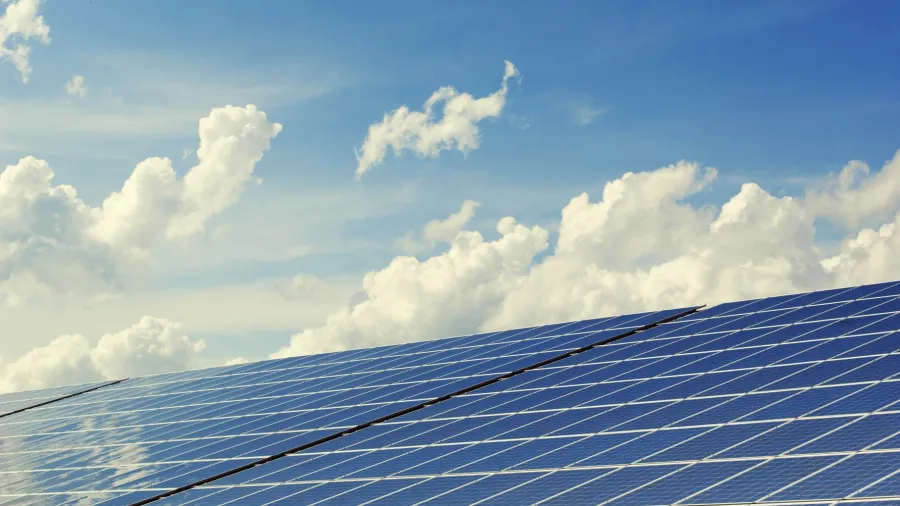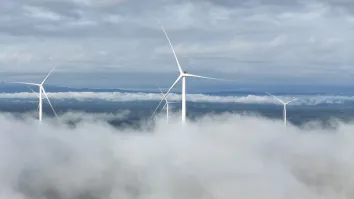
How grid enhancements can ignite Malaysia's solar energy boom
Experts warn that grid enhancements will be crucial for the solar energy mix, which accounted for 18% of the country's RE.
As Malaysia sets its sights on a more sustainable future, renewable energy is taking centre stage, with solar power expected to lead the expansion. The country’s Ministry of Natural Resources, Environment and Climate Change has ambitious targets to increase its renewable energy installed capacity, aiming for 31% by 2025 and 40% by 2035. It also wants to achieve 18.4 gigawatts (GW) of renewable power by 2040. Achieving these targets is tenable but Malaysia's grid infrastructure will need significant enhancements to support the variable power source as the capacity grows.
According to the Malaysia Renewable Energy Roadmap, renewables accounted for 23% or 8.45 GW of its installed capacity mix in 2021, with gas and coal accounting for 39% and 34% of the total, respectively.
“Growing the amount of renewables to 18.4 GW by 2040, the grid itself needs to be strengthened for it to be able to take on the intermittency and variability of the solar energy,” The Lantau Group Principal Azrina Abdul Samat told Asian Power.
Samat noted that battery storage is one of the strategies the government is looking at to improve the grid. The ministry, in 2021, said that it plans to install battery energy storage systems with a 500 megawatts capacity from 2030 to support the potential of solar power, in multiples of 100MW.
Behind-the-meter, Malaysia has employed schemes such as Net Energy Metering (NEM) 3.0 and the Self-Generation scheme to promote the installation of solar panels on rooftops for consumers to offset their bills by self-generating solar energy and an option to export any excess back to the utility
However, despite the falling cost of solar PV installation in recent years, only the top 1% of domestic customers have done so. The domestic tariffs in Malaysia are also one of the lowest in Southeast Asia with the lowest tier beginning at US$0.049 (RM 0.218) for the first 200kWh and the highest tier at US$0.13 (RM 0.571) for above 901kWh.
“Because of that, there’s a lesser push for domestic customers to be installing solar as they continue to enjoy the low tariffs,” she said, adding that the tariffs are also cross-subsidised.
For commercial and industrial customers, Samat said that the tariffs are competitive but on the lower side than the neighbouring countries, giving them a bigger push to deploy solar and the take-up is on the rise although some of the hindrances they face are the local legislation preventing to install solar panels on the rooftops of leased or rented facilities.
Solar potential
According to the Roadmap, large hydropower dominated the share of renewables in the country at 5,692 megawatts (MW), followed by solar PV at 1,534 MW, biomass at 594 MW, small hydropower at 507 MW, and biogas at 123 MW.
Whilst hydropower forms the bulk of the renewables capacity and the fastest means to reach the renewables aspiration, Samat noted that the sector is “constrained” due to the need for a suitable site and the high capital expenditure.
Malaysia’s low wind speeds due to its geographical location limit the potential to harness wind energy though pockets of higher wind speeds or coastal areas may still will. On the other hand, the country has a solar irradiance between 4.2 to 5.5 per kilowatt-hours per square meter per day with around 12 hours of sunshine in a day.
“Solar will be the fastest growing in Malaysia in terms of renewable choices,” she said.
Fitch Solutions also expect that Malaysia’s target will be supported by the strong growth in the solar power sector. Power Analyst David Thoo said in the report that the Malaysian government has implemented measures that would boost the country’s solar capacity.
Thoo noted that the government issued solar project tenders through the Large Scale Solar Programme (LSS), LSS3 in 2020 and LSS4 in 2021, which received a total of 112 bids across 20 projects.
The energy and natural resources ministry also launched the NEM 3.0 scheme that encourages the installation of solar panels on the property of the locals, businesses, and government. Through this scheme, the participants were allowed to offset electricity bills by sending their excess solar power to the grid.
Malaysia also launched a Green Electricity Tariff (GET) programme in November 2021 which allows consumers to cut their carbon emissions by purchasing renewable energy. The consumers need to pay 3.70 sen per kilowatt-hour (kWh) or ¢0.08 of renewable energy and they will be provided with a Malaysian Renewable Energy Certificate.
Under the GET programme, the government allotted 4,500 gigawatt-hours of renewable electricity that can be subscribed to.
“Our current forecast for non-hydropower renewables growth remains skewed towards solar power, as we have yet to notice any strong move by the government to advance biomass and waste growth and introduce wind power,” Thoo said in the report.
Malaysia also has a Feed-in Tariff system that mandates distribution licenses to purchase the generated electricity from renewable sources of Feed-in Approval Holders and set the rate.
Increasing renewable uptake
Malaysia has recently launched two programmes that will propel its energy transitions and green energy uptake. Samat said the government announced in November 2022 a virtual power purchase agreement (VPPA) scheme through the Corporate Green Power Programme.
Under the programme, an eligible corporate consumer can enter into an agreement with a solar power producer to buy and sell renewable energy produced by the plant “under mutually agreed terms and conditions and price structure,” according to Malaysia’s Energy Commission.
The plant should be completed by 2025. The application for the programme ran from 7 November 2022 to 20 March 2023.
Samat also noted the launch of another GET this year offered by the largest electricity utility in Malaysia, Tenaga Nasional Berhad (TNB), with a cumulative quota of up to 6,600 gigawatt-hours for a subscription.
Residential and non-residential customers under the programme can subscribe to 100 kilowatt-hours (kWh) blocks, and 1,000 kWh blocks, respectively, for ¢0.08/kWh, according to TNB. They will receive Malaysia Renewable Energy Certificate and will be exempted from the imbalance cost pass-through from January to June 2023.
“I do believe Malaysia in its efforts to improve and grow the renewables,” Samat said. “The two new developments, CGPP and GET, are active measures and initiatives that should really improve and should really grow the renewables in Malaysia, in line with the target that we have.”
“Solar is going to be driving the growth for renewables with the economy picking up and a lot of more corporate players are looking to boost their ESG targets,” Samat said.
RE deployment challenges
With the current share of renewables in the generation capacity, Rystad Energy sees it is feasible for Malaysia to reach the 31% renewables share target by 2025, “but this will require a serious commitment to expanding the solar PV and bioenergy fleet,” said Head of Power Research Carlos Torres Diaz.
“We expect close to 500 MW of new solar PV capacity to be installed in 2023 but the utilisation of coal and gas plants is likely to remain high as demand continues to increase,” Diaz said.
To reach the goal of 31% renewable energy share in 2025, the roadmap showed that large hydropower is expected to reach 5,826 MW, followed by solar by 4,706 MW. Smally hydro should reach 1,153 MW, biomass at 862 MW, and biogas at 333 MW.
The roadmap has also identified resource potential for the country with 269 GW for solar PV, lead by ground-mounted configurations with 201 GW, followed by rooftop solar with 42 GW and floating configurations at 17 GW. Malaysia also has 13.6 GW resource potential for large hydro, 3.6 GW for bioenergy, 2.5 GW for small hydro, and 229 MW for geothermal.
However, deploying them is not without challenges. Jun Yee Chew, head of Asian Renewables Research said that LSS is the only way to deploy utility-scale solar PV in the country, with foreign participation in the programme limited to 49%.
He added that as gas and coal receive government subsidies, this makes renewables less competitive, “artificially driving the true cost of fossil fuel down and diverting much-needed investment in the renewables.”
The roadmap said there is difficulty in deploying solar PVs in securing land for LSS as well as debt financing for solar rooftop systems. There is also a lack of regulatory framework for customer choice, capacity limits, and limitations on the NEM scheme to assets on the premises of the customers.
The country’s roadmap also cited a longer gestation period, high development costs, public acceptance, and government and policy support, amongst others as the key challenges in the development of large hydropower projects.
Moving forward
To achieve the goal for the solar sector by 2025, Malaysia’s roadmap stated that it will hinge on the existing programmes but will be paired with the potential new business models.
Future NEM programmes will be reviewed whilst the offtake tariffs will gradually converge with energy costs, whilst NEM tariffs and grandfathering of contracts will remain which will create more incentives and boost the rate of NEM uptake.
Other business models will be explored aside from NEM and LSS, including corporate power purchase agreements (PPA), and third-party access frameworks. The roadmap also noted that they will look into other LSS auctions for solar that will take up lesser land such as floating solar.
Aside from expanding the corporate PPAs from the limited 600MW, the government should offer more incentives that will aid projects with higher upfront capital expenditure such as through low-interest loans, Chew said. One way Malaysia could do this is by seeking out the Just Energy Transition Partnership like in Indonesia and Vietnam.
Regulatory roadblocks should also be reduced to accelerate the deployment time of the project, improving the economics of developers. Transmission infrastructure should also be upgraded but it could be shared with the private sector due to high capital cost.
“Malaysia’s government should gradually remove fossil fuel subsidies to ensure renewables can compete on a level playing field. The fossil fuel subsidy money should also be used to invest in renewables,” Chew said.



















 Advertise
Advertise






